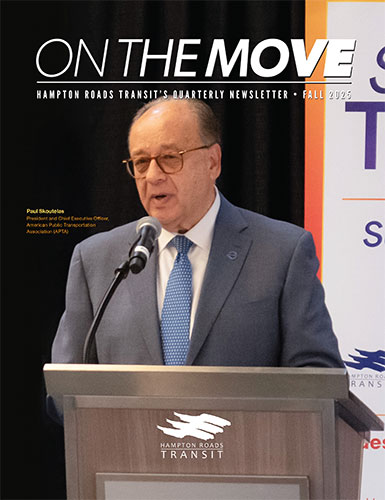How Public Transit Builds Connections & Strengthens Communities
Public transportation is an invaluable service to the community, providing access to employment, education and essential appointments. Transit is part of the larger social infrastructure that brings people together, creating connections and forming relationships that help them thrive.
Social connection is vital not only to our individual physical, mental and emotional health but also to the health and well-being of our communities.
Social infrastructure is the combination of resources, policies and services that enable people to participate in economic and social activities. It encompasses programs like civic, sports and religious organizations; policies related to public transportation, housing and education; and community resources such as libraries, parks and playgrounds.
In 2023, U.S. Surgeon General Vivek Murthy released a report on the epidemic of loneliness and isolation—a situation exacerbated by the Covid-19 pandemic. “Given the profound consequences of loneliness and isolation,” Murthy advised, “we have an opportunity, and an obligation, to make the same investments in addressing social connection that we made in addressing tobacco use, obesity and the addiction crisis.”
The Surgeon General’s Advisory on the Healing Effects of Social Connection and Community outlines six pillars for advancing social connection. One of the national strategies includes strengthening social infrastructure. According to the advisory, “decisions about the layout of our cities, from the usability and reach of public transportation… have a direct effect on social interaction in a community.”
In other words, infrastructure that supports social interactions also reduces isolation. In turn, strengthening infrastructure that promotes social connection is critical to advancing a community’s health, resilience, safety and prosperity.
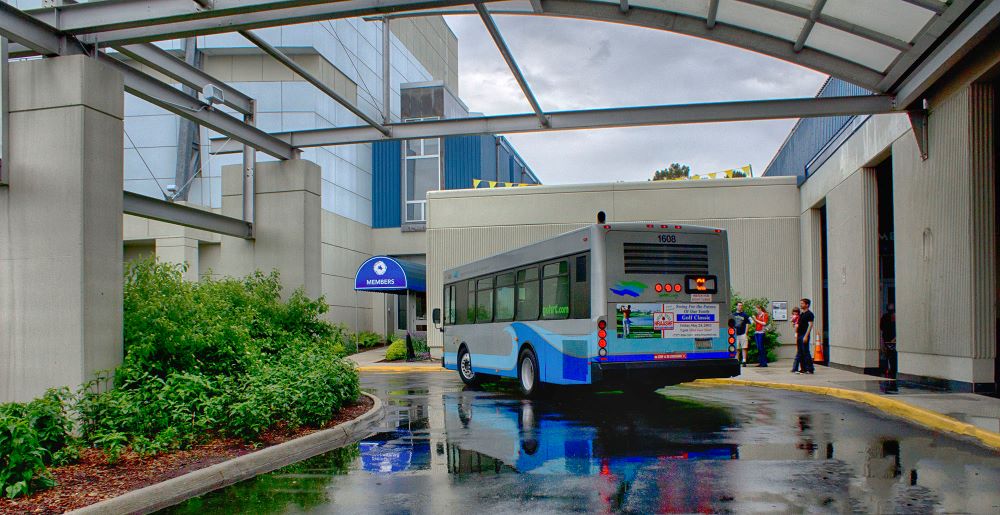
Public Transit is Freedom
Public transit is freedom—the freedom to explore your city, get involved in the community and get where you need to go. It keeps you connected to family and friends and can improve your quality of life by increasing accessibility and participation in activities that would otherwise be out of reach.
Perhaps no one understands this better than Alicia Griffin, chair of Hampton Roads Transit’s Paratransit Advisory Committee. Griffin was diagnosed with multiple sclerosis in 2004 and became reliant on paratransit about a year later.
Griffin uses paratransit at least three to four times per week to get to church, the movie theater, comedy shows, painting classes and shopping.
“Without access to paratransit, I would be secluded,” Griffin said. “I would not be able to interact with my church family or friends.” Griffin says the power of mobility provided by public transit allows her to be included. “I don’t have to be stuck in the house,” she continues. “I can go out and be with friends.”
Griffin says it’s crucial for people with disabilities to be able to get out and interact with their communities.
Troy Bowser also serves on the Paratransit Advisory Committee. A victim of gun violence, he was left blind by his injuries. Bowser has used paratransit in conjunction with public transit for more than 25 years.
Bowser performs at local comedy clubs and values his sense of independence from being able to get around town.
“It actually makes me feel good when I can leave a show, and my paratransit van is out there waiting for me,” Bowser said. “I don’t have to depend on anyone to get home.”
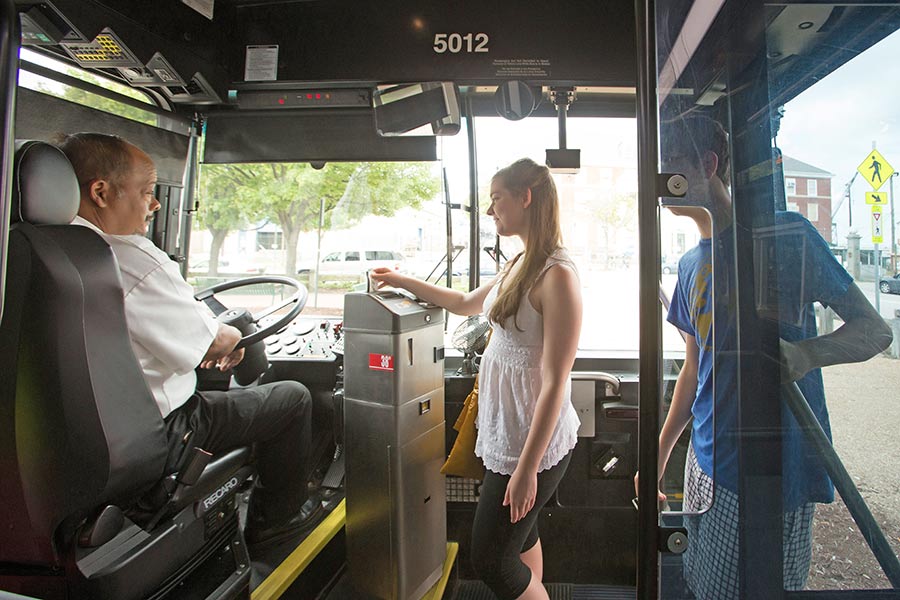
Young Riders Are Using Transit Differently
Hampton Roads Transit’s 2023 Origin and Destination Study shows that more people are taking public transit to places other than work and home. According to the study, work and home are still the most common weekly destinations. However, when including the weekend, the most common destination is “other.”
“The younger cohort of people who are just entering the workforce are using transit differently,” said Ray Amoruso, HRT’s Chief Planning and Development Officer. “There’s more weekend ridership, more non-nine to five ridership.”
Ben Grau, an electrical engineer at Newport News Shipbuilding, is in that young cohort of riders choosing to use public transportation differently.
Grau has been using public transit on the Peninsula for a few years and is a member of HRT’s Transit Riders Advisory Committee (TRAC). While he takes advantage of public transit to get back and forth to work, he also enjoys the ease of hopping on a bus to get to big events, avoiding some of the hassles of big crowds.
“The parking might cost ten to 15 dollars,” Grau says. “And there will be a long line in and out of the parking lot.”
Besides the financial benefits, Grau says he’s also learned more about his community from taking public transit.
“The social impact of public transportation — there’s something to be said for interacting with people in your neighborhood,” Grau says. “Because driving is a very isolating experience. But when you’re on a bus, you notice who is in your neighborhood, who is in the neighborhood next to you. You notice who is getting on and off at certain stops.”
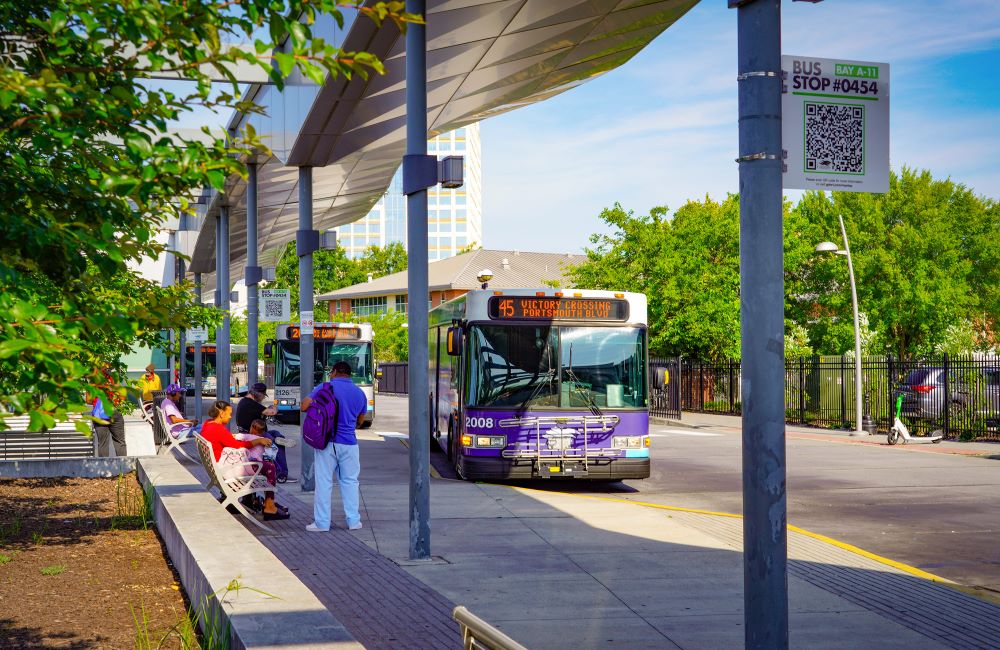
More Than Getting from Point A to Point B
Public transit agencies often measure success based on factors such as on-time performance, safety and budget. With the push to improve social infrastructure, people’s happiness could soon be the next key performance indicator. Dr. Yingling Fan, an urban and regional planning professor at the University of Minnesota’s Humphrey School of Public Affairs, believes it is inevitable.
“Traditionally in transportation, it’s always been about getting you from Point A to Point B quicker,” Dr. Fan told the American Association of State Highway and Transportation. “And when you over-emphasize efficiency, you kind of minimize the human experience. So, I would say happiness should be a new performance measure for our transportation systems where we can maximize the human experience.”
Studies show that social connection is the key to a long, healthy life.
Retired Virginia Beach teacher Denise Johnson can attest. She’s a lifelong transit user. Her grandmother insisted they know how to use public transportation and taught them how to take the bus when Johnson was young.
“On Saturdays and Sundays, we never used the car,” Johnson says. “We took the bus everywhere. Church. The park. Shopping. Everywhere.”
Now, she is a public transit advocate and served as HRT’s TRAC Committee Chair for six years. Johnson has a car and a valid driver’s license but prefers public transportation.
“Many people don’t understand how easy it is to ride,” Johnson says. “It’s not as hard as you think it is.” She knows every route in HRT’s system, turn-by-turn, and rides daily.
“It keeps me going,” Johnson says.
“My mother and grandmother used to say they never met a stranger,” Johnson recalls. “I live like that.” That’s what she likes about riding public transit: the opportunity to interact with people, to listen, and “to make somebody’s day or somebody gets to make yours.”
Johnson has 47 grandchildren. She’s made sure all of them who are old enough have a free Student Freedom Pass. She said it’s not uncommon for her to load a bunch of them up on the bus, light rail or ferry to go shopping, visit the library or see a play.
“I can’t fit them all in my car,” Johnson says. “And it would cost too much to take an Uber or Lyft.”
One of her favorite destinations is the Slover Library in Downtown Norfolk, where she’s enjoyed many free social events over the years.
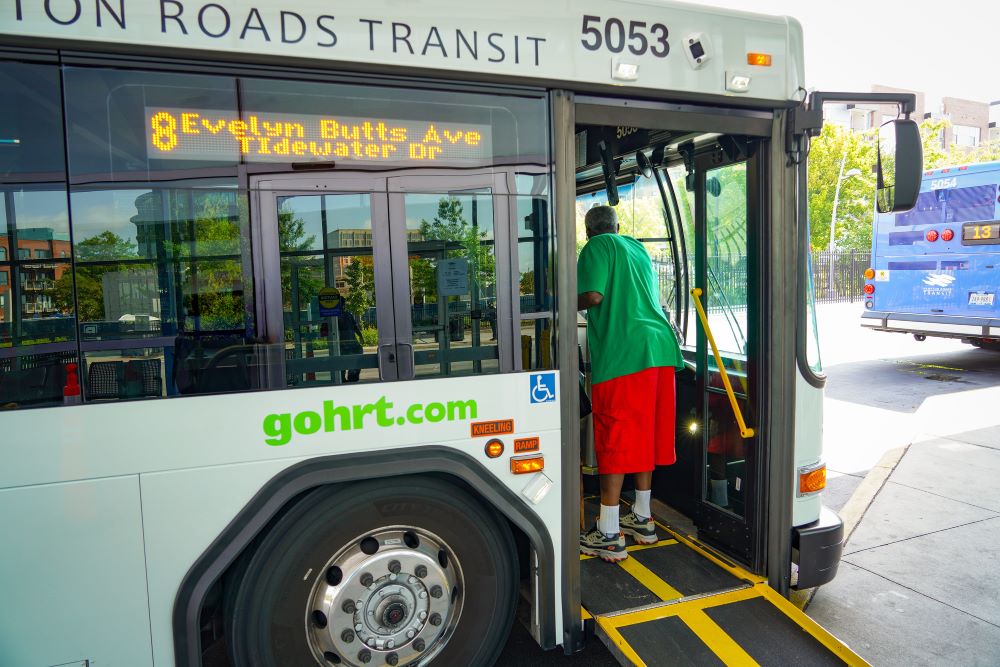
Connecting Communities
Public transportation is more than just a service—it’s a bridge to opportunity, connection and community. From fostering independence to enriching the lives of riders, young and old, transit enables people to engage fully in the world around them. Whether for work, social gatherings or simply exploring the city, public transit reminds us that connection—both to places and to people—is essential for thriving communities.

